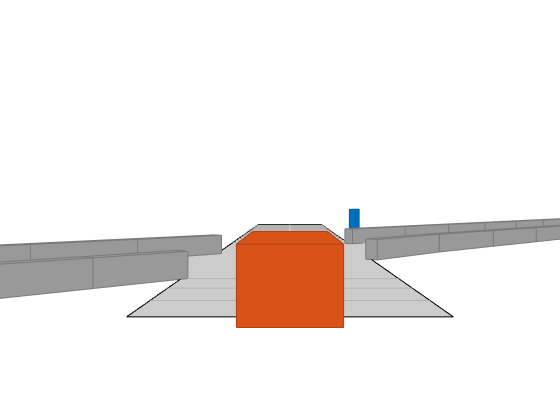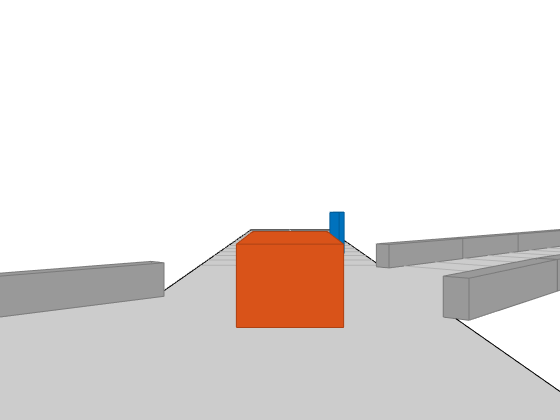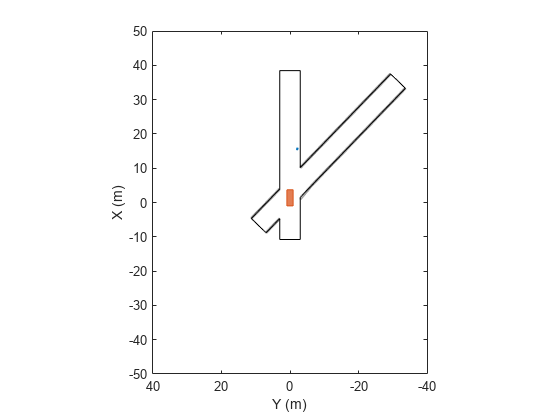targetOutlines
Outlines of targets viewed by actor
Syntax
Description
[
returns the oriented rectangular outlines of all non-ego and non-barrier target
actors in a driving scenario. The outlines are as viewed from a designated ego
vehicle actor, position,yaw,length,width,originOffset,color] = targetOutlines(ac)ac. See Ego Vehicle and Targets for more
details.
A target outline is the projection of the target actor cuboid into the
(x,y) plane of the local coordinate system
of the ego vehicle. The target outline components are the
position, yaw,
length, width,
originOffset, and color output
arguments.
You can use the returned outlines as input arguments to the outline plotter of a
birdsEyePlot. First, call the
outlinePlotter function to create the plotter object. Then, use the
plotOutline function to plot the outlines of all the actors in a
bird's-eye plot.
[
returns only the oriented rectangular outlines of all barriers in a driving
scenario. The additional output argument position,yaw,length,width,originOffset,color,numBarrierSegments] = targetOutlines(ac,'Barriers')numBarrierSegments
contains the number of segments present in each barrier.
You can use the returned barrier outlines as input arguments to the outline
plotter of a birdsEyePlot. First, call the
outlinePlotter function to create the plotter object. Then, use the
plotBarrierOutline function to plot the outlines of all the
barriers in a bird's-eye plot.
Examples
Input Arguments
Output Arguments
More About
Version History
Introduced in R2017a


